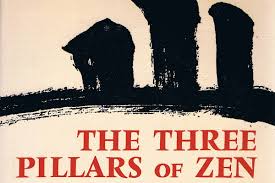A Day in the Life of a Zen Monk

To guard against their [students’] becoming attached to the sitting poster, Zen masters incorporate mobile zazen (i.e., meditation practice) into their training. It is emphatically not true . . . that today the principal occupation of Zen monks is sitting. Except for a total of six weeks or so in the year when they are in sesshin (i.e., intensive meditation retreat), Japanese monks in training spend most of their time working, not sitting. At Hosshin-ji, which is more or less typical of most Japanese Zen monasteries in this respect, monks usually sit for an hour and half in the morning, and for about two or three hours in the evening. And since they normally sleep about six or seven hours, the other twelve or thirteen hours of the day are spent on such labors as working in the rice fields and vegetable gardens, cutting wood and pumping water, cooking, serving meals, keeping the monastery clean, and sweeping and weeking its extensive grounds. At other times they tend the graves in the cemetery adjoining the monastery and chant sutras and dharanis for the dead both in the homes of devotees and in the monastery. Additionally, Zen monks spend many hours walking the streets begging for food and other necessities, to learn humility and gratitude, as part of their religious training. All these activities are deemed to be the practice of mobile zazen, since they are to be performed mindfully, with total involvement. Huai-hai’s famous dictum, “A day of no work is a day of no eating,” animates the spirit of the Zen monastery today as strongly as it ever did.
from The Three Pillars of Zen
by Roshi Philip Kapleau

